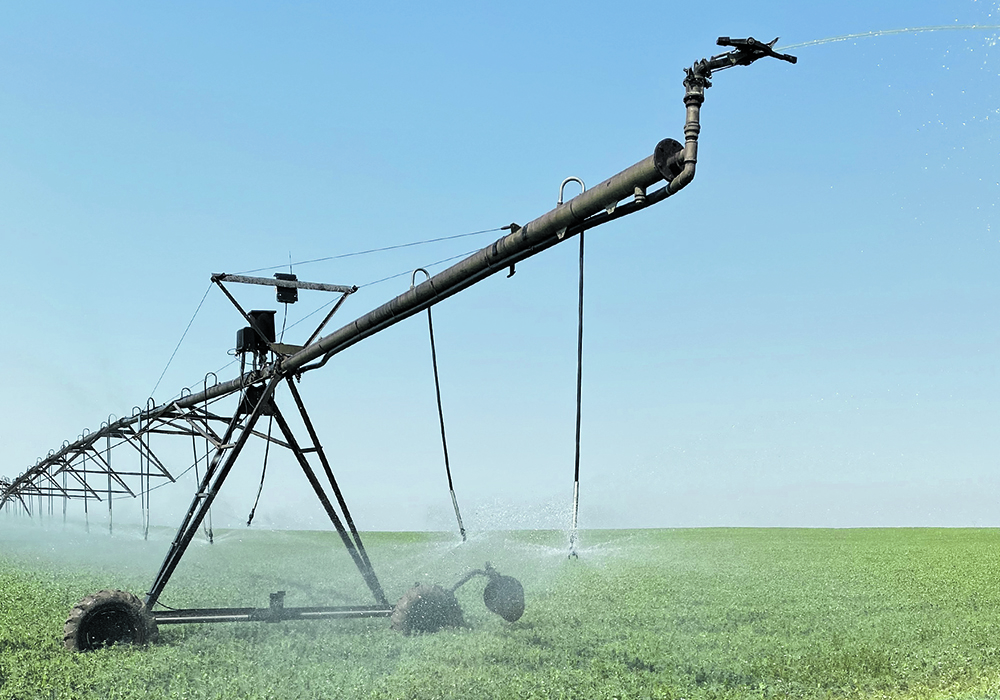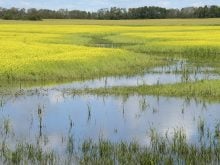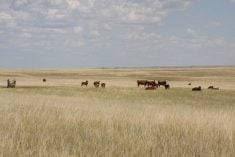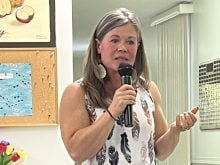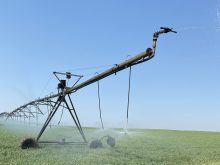The expansion project has faced criticism in the province, but supporters argue it would boost the province’s GDP
REGINA — Proponents of Saskatchewan’s plan to add 90,000 acres of irrigation by rehabilitating a decades-old uncompleted project are looking forward to progress.
The Westside Irrigation Rehabilitation (WIRP) project is part of a 10-year, $4-billion megaproject announced four years ago to expand Saskatchewan’s irrigable acres from Lake Diefenbaker to 500,000.
At the time, the WIRP was to be the first stage and cost $500 million. In March, the government announced it would proceed with this phase at a cost of $1.15 billion, which will be cost-shared with producers.
Read Also

Canola oil transloading facility opens
DP World just opened its new canola oil transload facility at the Port of Vancouver. It can ship one million tonnes of the commodity per year.
The second phase, if it goes ahead, would be the Westside Irrigation Expansion project to add 260,000 acres of irrigation. The third would be the Qu’Appelle South Conveyance project, which would add 120,000 acres while ensuring water supply to Regina and Moose Jaw areas.
In July, a joint venture of Stantec and MPE known as Prairie Engineering Partners was awarded the contract for planning and engineering design work to move WIRP ahead.
Construction is expected to start in 2025.
Aaron Gray, co-chair of Irrigation Saskatchewan, said he is frustrated by opposition to the project from those who say it will only benefit a few farmers who can afford to pay their share.
“How many families does one farmer feed?” he said during an interview from his combine.
“We know it’s feasible. Why do we keep hearing opposition to this?”
A recent media report suggested the project shouldn’t proceed because a feasibility study wasn’t completed, but the province and producers say that isn’t the issue. A federal government report, Prairie Prosperity, which was completed in 2020 by then-Western Economic Diversification Canada, recommended irrigation development.
Water Security Agency spokesperson Patrick Boyle said between 2021 and 2023 the agency analyzed the entire Westside project and knows it is viable.
Boyle said focusing first on rehabilitation makes sense because it is achievable. The province has always said it needs federal investment to tackle the more expensive expansion parts of the project. However, Ottawa has suggested a loan rather than an investment.
“Once it became clear that the federal government wasn’t going to be a financial partner at this time, the province decided to move forward,” said Boyle.
The economic analysis now underway, along with consultation, will determine the path forward and the cost-share structure.
For Gray, the question isn’t whether farmers can afford to participate but how they can afford not to.
He said the gross revenue per acre of irrigated crops will add significantly to the gross domestic product, and the public won’t have to pay for large crop insurance payouts.
Napkin math shows a gross revenue per acre minimum advantage of $300, he said. If the full 500,000 acres were developed, that would mean $150 million per year. Saskatchewan uses a GDP multiplier of seven, putting the opportunity at $1.05 billion annually, Gray said.
He said irrigation will mean capturing more carbon, preventing soil erosion and growing more crop, resulting in fewer greenhouse gas emissions from growing food.
Gray said he can irrigate and make money, compared to losing money on dryland crops. For example, last year his barley in a drought area yielded just nine bushels per acre and it sold for $6 or $54 per acre compared to about $280 per ac. in inputs.
The same barley this year is 39 bu. per acre but at a price of $4.30, he is still losing money.
He hadn’t yet started harvesting his irrigated wheat this year, but if it yields 85 bu. per acre as expected at $7 per bu., it will earn $600 per acre compared to the $300 in inputs. Specialty crops will do even better.
“You ask me how am I going to afford to put in irrigation? How can I afford not to put in irrigation?” Gray said.
He doesn’t have land in the WIRP area.
The province also has numbers suggesting one acre of dryland wheat contributes $400 to the GDP while one acre of irrigated vegetables can add $6,200 and one acre of processed higher value crops can contribute $20,000 per acre.
Boyle said the WSA is “assessing the best path forward for things like the environmental assessment” and added a committee is working with the community of Cumberland House, which is on the delta of the North and South Saskatchewan Rivers.




